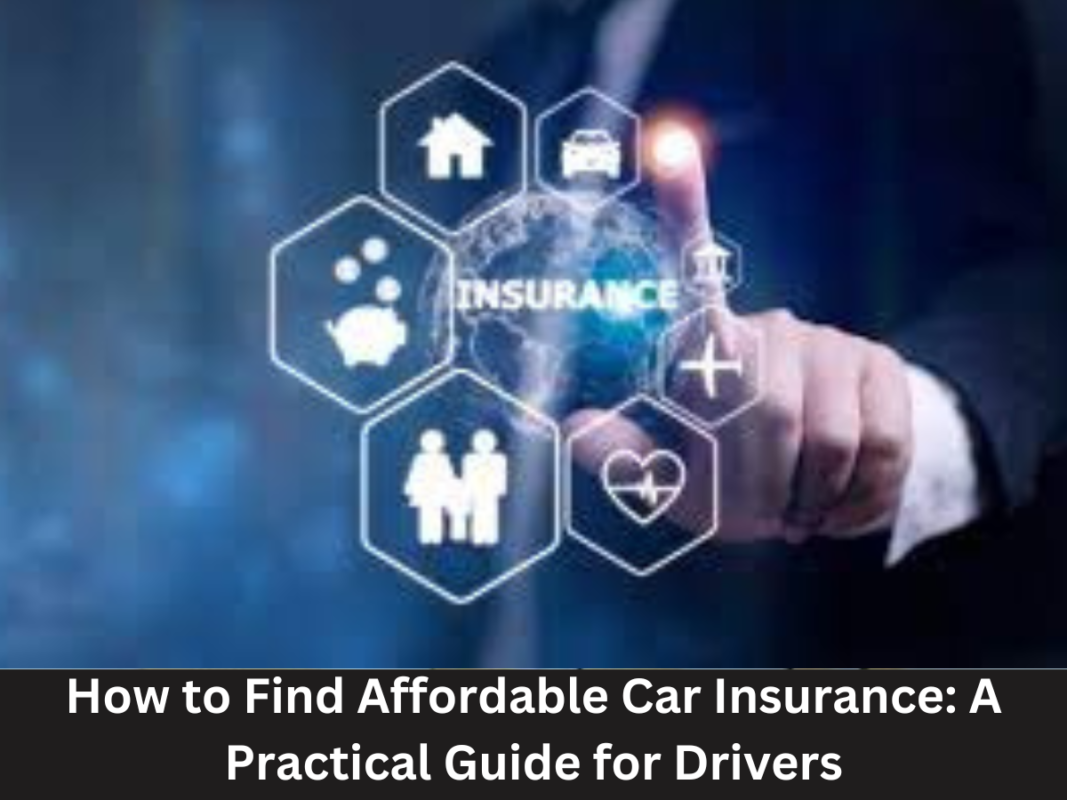Car insurance is a necessity for every driver, but that doesn’t mean it has to come with a hefty price tag. Whether you’re a new driver, a seasoned motorist looking to save, or someone seeking better coverage options, finding affordable car insurance can make a huge difference in your overall budget.
But with so many options out there, how can you be sure you’re getting the best deal? In this post, we’ll break down everything you need to know to find affordable car insurance without compromising on coverage. By the end, you’ll have the tools and tips needed to make an informed decision, save money, and keep yourself protected on the road.
Why Affordable Car Insurance is Important
Car insurance isn’t just a legal requirement in most states—it’s a safety net for both you and your wallet. Whether you’re involved in an accident, dealing with theft, or facing damage from natural disasters, insurance ensures you won’t have to bear the full financial burden.
However, car insurance premiums can vary greatly, with some drivers paying several hundred dollars more than others for the same coverage. According to the National Association of Insurance Commissioners (NAIC), the average annual premium for car insurance in the U.S. was approximately $1,674 in 2022. That’s a significant amount, especially when you factor in the cost of fuel, maintenance, and other driving-related expenses.
Finding affordable car insurance that still provides adequate protection is crucial. Luckily, with a bit of research and the right strategy, you can secure a policy that fits your budget.
Key Factors That Impact Car Insurance Rates
Understanding what factors influence your auto insurance rates will help you make smarter decisions when shopping for coverage. Here are the key elements insurers look at:
- Driving Record
A clean driving record can lead to significantly lower premiums. If you have traffic violations, accidents, or DUIs on your record, you’ll likely pay higher premiums. On the other hand, maintaining a spotless driving history can save you hundreds of dollars each year. - Vehicle Type
The make, model, and age of your car also play a role in your insurance rate. Luxury cars, sports cars, and high-performance vehicles often come with higher premiums due to the cost of repair and replacement. Conversely, older vehicles with lower value tend to be cheaper to insure. - Location
Your location affects your rates based on factors like traffic density, crime rates, and local weather conditions. If you live in a metropolitan area with a high rate of accidents or theft, your premiums may be higher than if you live in a rural area. - Coverage Type and Limits
The amount of coverage you select impacts your premiums. Comprehensive and collision coverage, which protect your car in case of accidents or damage, usually come at a higher price. On the other hand, liability coverage—though essential—is typically more affordable. - Age and Experience
Younger drivers (especially those under 25) tend to have higher premiums, as they are statistically more likely to be involved in accidents. However, as you gain more driving experience, your premiums may decrease. - Credit Score
In many states, insurers also use your credit score to determine your premium. Drivers with higher credit scores typically pay less for car insurance because they are seen as less risky.
How to Find Affordable Car Insurance: Expert Tips
- Shop Around and Compare Quotes
One of the most effective ways to find affordable car insurance is to shop around. Premiums can vary widely from one insurer to the next, so comparing quotes from multiple providers is crucial. Many websites offer comparison tools that allow you to quickly get quotes from several different insurance companies. - Consider Increasing Your Deductible
The deductible is the amount you pay out-of-pocket before your insurance kicks in. By increasing your deductible, you can lower your monthly premiums. Just make sure you can afford to pay the higher deductible if you need to file a claim. - Look for Discounts
Many insurance providers offer discounts that can significantly reduce your premiums. Common discounts include:- Safe driver discounts for maintaining a clean driving record
- Multi-policy discounts for bundling auto insurance with home or renters insurance
- Low-mileage discounts for drivers who don’t use their car frequently
- Student discounts for young drivers with good grades
- Maintain a Good Credit Score
Since your credit score can affect your insurance rates, it’s wise to work on improving it. Pay bills on time, reduce your credit card balances, and regularly check your credit report to ensure there are no errors. - Choose the Right Type of Coverage
Depending on your car’s value and your personal needs, you may not need comprehensive or collision coverage. If your car is old and has a low resale value, for instance, you might be better off opting for basic liability coverage instead of paying for full coverage. - Consider Pay-Per-Mile or Usage-Based Insurance
Some insurers now offer pay-per-mile or usage-based policies. These types of insurance track your driving habits, such as how many miles you drive and how safely you drive. If you’re a low-mileage driver or have good driving habits, this can be an excellent way to save money. - Review Your Policy Regularly
Don’t assume your current policy is the best deal. As your car ages or your circumstances change, it’s important to review your policy and adjust coverage accordingly. This will ensure that you’re still getting the best deal.
Personal Insight: My Journey with Car Insurance
When I first bought my car, I didn’t realize how many options there were when it came to car insurance. At first, I simply went with the default coverage suggested by my dealership. However, I quickly realized I could save hundreds of dollars a year by shopping around and comparing quotes. I also learned that increasing my deductible slightly lowered my premium without compromising my protection.
Additionally, I found a significant discount by bundling my car insurance with my home insurance, which made a huge difference in my overall monthly expenses.
Conclusion: Take Control of Your Auto Insurance Costs
Finding affordable car insurance doesn’t have to be a stressful experience. By understanding the factors that affect your premiums and using the strategies outlined in this guide, you can find a policy that fits your budget and provides the coverage you need.
Next Steps:
- Start comparing car insurance quotes from different providers today.
- Review your coverage needs and consider increasing your deductible for lower premiums.
- Take advantage of available discounts, like safe driver or multi-policy savings.
Don’t settle for the first car insurance quote you receive. Do your research, and you’ll find an affordable option that works for you!



